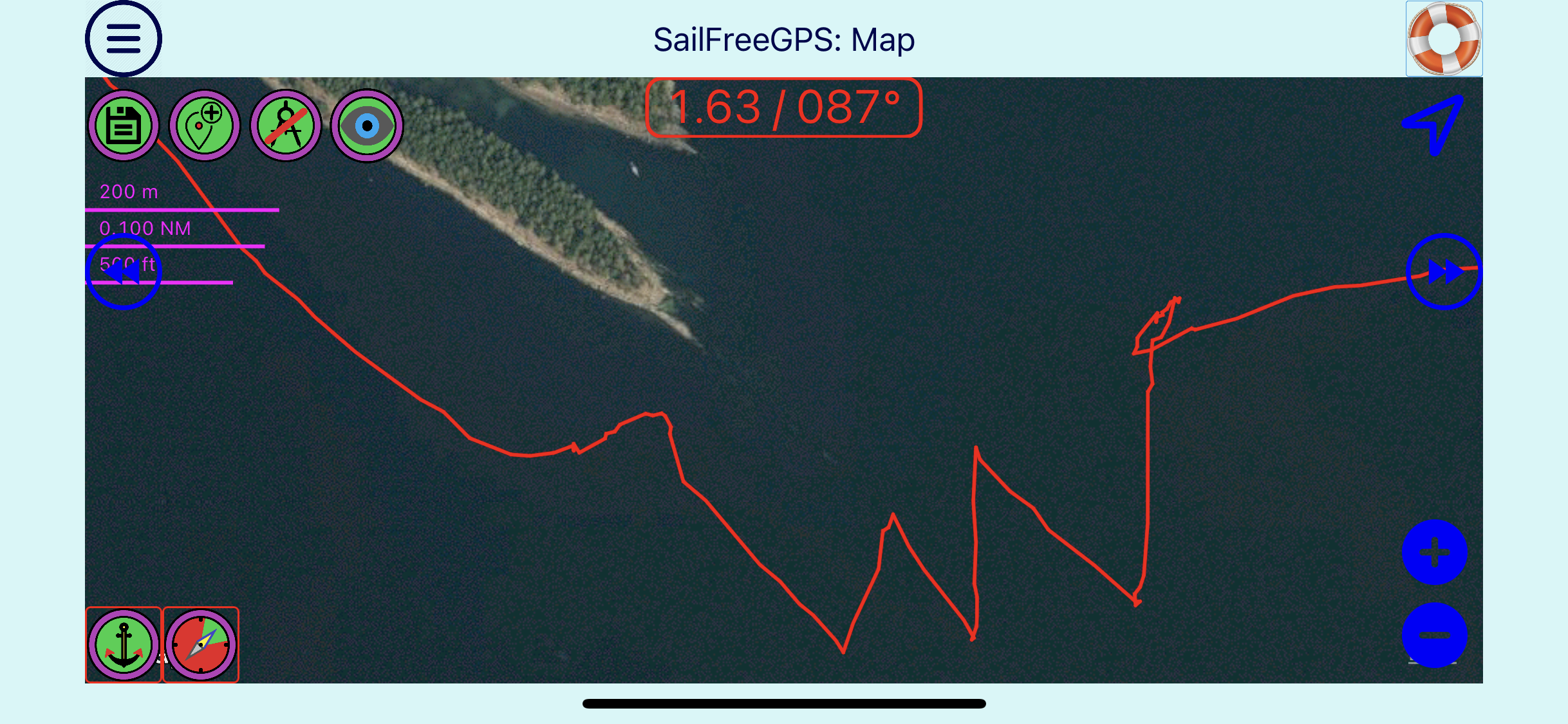Modes
When you’re driving your boat, and in particular when you’re racing your boat, understanding your modes becomes very important.
For Race 2 Alaska, for instance, where the rules allow human powered propulsion as well as sailing, then race strategy becomes about switching from one more to another at the most appropriate point.
This is a first post about Modes and the kinds of measurements we will want to make about each of the modes. In a standard sailing race, modes would correspond to which set of sails you have up and whether they were reefed. With R2AK, throw in human propulsion modes and combinations of modes and things get even more interesting.
And the best part for us is that we’re aiming to include kiting as a new mode, which will complicate strategy even more.
In the picture below you can see a recent experimental GPS track where we can analyze how well we’re doing with regard to mode transitions. I was sailing solo in this case, and winds were light. You can see us entering the scene from the right. I was paddling in that case and managing to get in about 1 knot of boat speed.
Then, the wind picked up sufficiently to switch to sailing. You can see how much progress I lost by drifting downwind in the switch from rowing to sailing modes.
After that, you can see how well (or poorly!) I was performing after that transition. It’s a fairly wide opening angle between tacks, and I ascribe that mostly to the fact that I was sailing under main alone with no jib.
At some point later on, the switch was made back to paddling and the tacks smooth out.

I’m looking forward to further tagging GPS tracks to match the mode being used more precisely and enabling this to feed into decisions around mode switching.